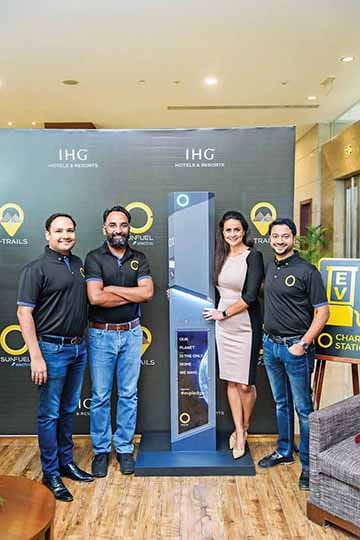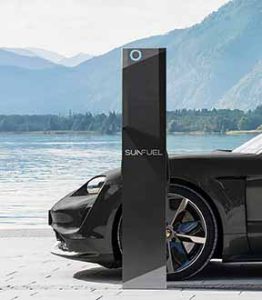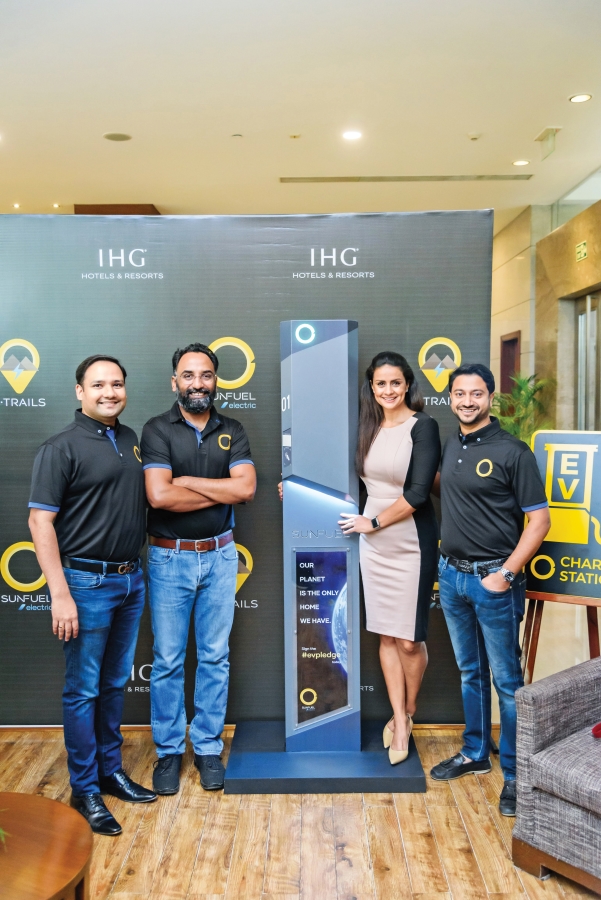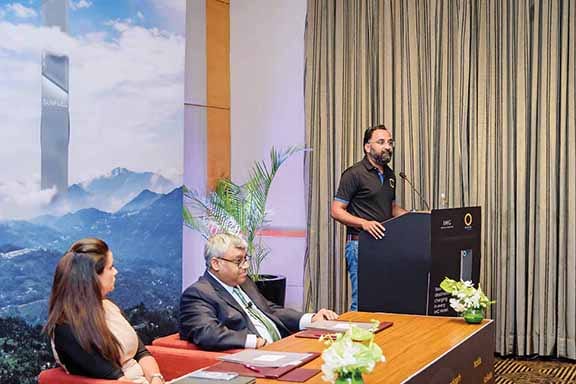SunFuel Electric is hoping to draw in affluent EV owners and aspirants alike into destination charging. Deepti Thore focuses on the fast catching trend and its ability to address range anxiety.
SunFuel Electric (SunFuel) is the latest to join the EV ecosystem bandwagon. The company recently announced a niche offering of destination chargers. It is aimed at drawing in affluent EV owners and aspirants alike by addressing their range anxiety which is known to kick in especially beyond city limits. The niche destination charging segment goes beyond public charging infrastructure and is in its nascent stages. SunFuel is charting its own course here by targeting the demand at destination luxury hotels pan India. According to Sudhir Nayak, Chief Driver at SunFuel Electric, responsible for driving the company’s EV strategy, “Destination charging is key to catalyse the adoption of high-end EVs in India. We believe this will encourage adoption of electric cars amongst people and make electric mobility cool and aspirational.” Over the next year, the company is aiming to install up to 400 destination charging stations across select luxury hot spots of the country. Over the next five years, it aspires to install one lakh charging units. These will include both the level 2 and fast charging units. The company will look to build the momentum gained from the domestic market to scale up globally in a bid to enhance its Return on Investment (RoI) and at the same help it do its bit in reversing climate change through the encouragement of green mobility solutions like Battery Electric Vehicles (BEVs).

(L to R) Rishabh S Mehta, Co-Founder, Sudhir Nayak, Chief Driver, Gul Panag, Co-Founder & Head of Partnerships and Community and Mathew Koshy Co-Founder & Managing Director at SunFuel Electric at the tie up ceremony with IHG Hotels & Resorts.
According to Gul Panag, Co-Founder and Head of Partnerships and Community, destination charging is key for the spread of ‘Electric Thinking’. “The more people see and witness accessibility and availability, the lesser will be their hesitancy in adopting EVs. We hope this will invite more and more people into the EV fraternity for a better future,” she opined. Panag drew attention to climate change being a reversible phenomenon with 40 per cent of it being attributed to transport tailpipe emissions. “Reversing it will have a huge impact!,” Panag exclaimed. Of the opinion that while the city charging infrastructure continues to pick up courtesy an easier accessibility, be it residential or commercial spaces, destination charging will address an untouched segment’s EV hesitancy.
The charging suite
The SunFuel charging suite is claimed to have been indigenously designed with support from academia at the Department of Design, IIT Delhi. The destination chargers are manufactured in India wherein the part’s mix constitute of both local and global sub-assemblies. The chargers are said to be localised at an estimated 70 per cent and designed keeping in mind the needs of public charging infrastructure for luxury and high-end private electric vehicles. On the sidelines of the virtual launch, the company revealed plans to eventually extend the charging suite to meet the needs of electric commercial vehicles with specially designed heavy-duty chargers claimed to be made from high-quality parts and consumables.
SunFuel will offer a charging suite for the city limits, on highways apart from the destination suite. Both the city and destination chargers are AC units with an output ranging from 7-22 kWh, depending upon the client’s requirement and the duty cycle. To meet the requirements of the highway ecosystem, the company will offer DC charging stations with 50 kWh capacity.
Charge ability
The Monolith charging unit fits in well as a destination charger. Beyond luxury hotels, it can also be deployed at residential and commercial spaces and schools too among other private spaces. This 7.7 kW, level 2 AC charger boasts of a sturdy, all metal design. The charger is always-on (24×7) or in connected mode, and enabled for digital payments like being QR code enabled. The Monolith is made available with a pillar for floor mounting and without the pillar for wall mounts. It is claimed to fully charge an EV in four to nine hours basis the battery size and the C-rating.
For city charging, SunFuel is offering the AdPod. Expected to be launched in January 2022, the Adpod is designed for places with high footfalls like public spaces. Equipped with all features similar to that of the Monolith, it stands out with the added feature of Over The Air (OTA) updates. It is made available with a Full High-Definition (HD), and a high backlit portrait display. Flaunting an upmarket, all glass and metal design, the charger has a dual nozzle again with a 7.7 kW, level 2 AC Charging capability.
The Expressmiles unit is a superfast charger designed for the highways. Targeted at fleet owners, the charger whilst in the development stage will be launched in the near future. The charger is priced northwards of nine lakh (for 50 kW variant ) and 50 Lakh (for 350 kW variant). Made available with or sans the display, the charger will be installed and commissioned by SunFuel end-to-end.
Opportunities and challenges
 SunFuel is banking on its design, community-appeal and seamless offering to stand out in an ecosystem largely dominated by 30 EV infra players. As a niche luxury EV charging solution provider, the company is looking to tap the potential of community travel and catering to their requirements beyond city limits. The company is taking its vision forward by signing up with luxury hotel chains. The company recently signed MoUs with the India Hotels Group (IHG) and Radisson Hotels in India for installation of its Level 2 AC chargers. The chargers will be installed in a phased manner and will be leased to the chain of hotels as fixed assets of the company. The responsibility to operate and maintain these chargers will rest entirely with SunFuel. SunFuel is also looking to partner other hotels similarly and expects the government intervention to support extended charging infrastructure. The company is also looking to extend the destination charging concept to industrial installations besides high-end residential complexes, premium office buildings and Special Economic Zones (SEZs). ACI
SunFuel is banking on its design, community-appeal and seamless offering to stand out in an ecosystem largely dominated by 30 EV infra players. As a niche luxury EV charging solution provider, the company is looking to tap the potential of community travel and catering to their requirements beyond city limits. The company is taking its vision forward by signing up with luxury hotel chains. The company recently signed MoUs with the India Hotels Group (IHG) and Radisson Hotels in India for installation of its Level 2 AC chargers. The chargers will be installed in a phased manner and will be leased to the chain of hotels as fixed assets of the company. The responsibility to operate and maintain these chargers will rest entirely with SunFuel. SunFuel is also looking to partner other hotels similarly and expects the government intervention to support extended charging infrastructure. The company is also looking to extend the destination charging concept to industrial installations besides high-end residential complexes, premium office buildings and Special Economic Zones (SEZs). ACI
Also read, Reimagining EV Charge Inlets













Leave a Reply